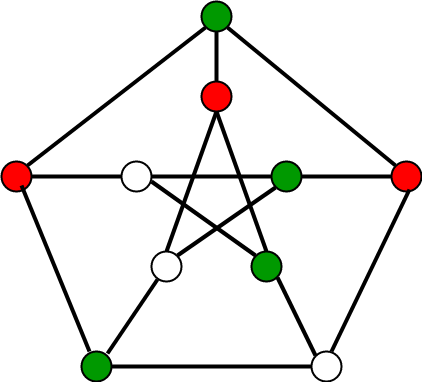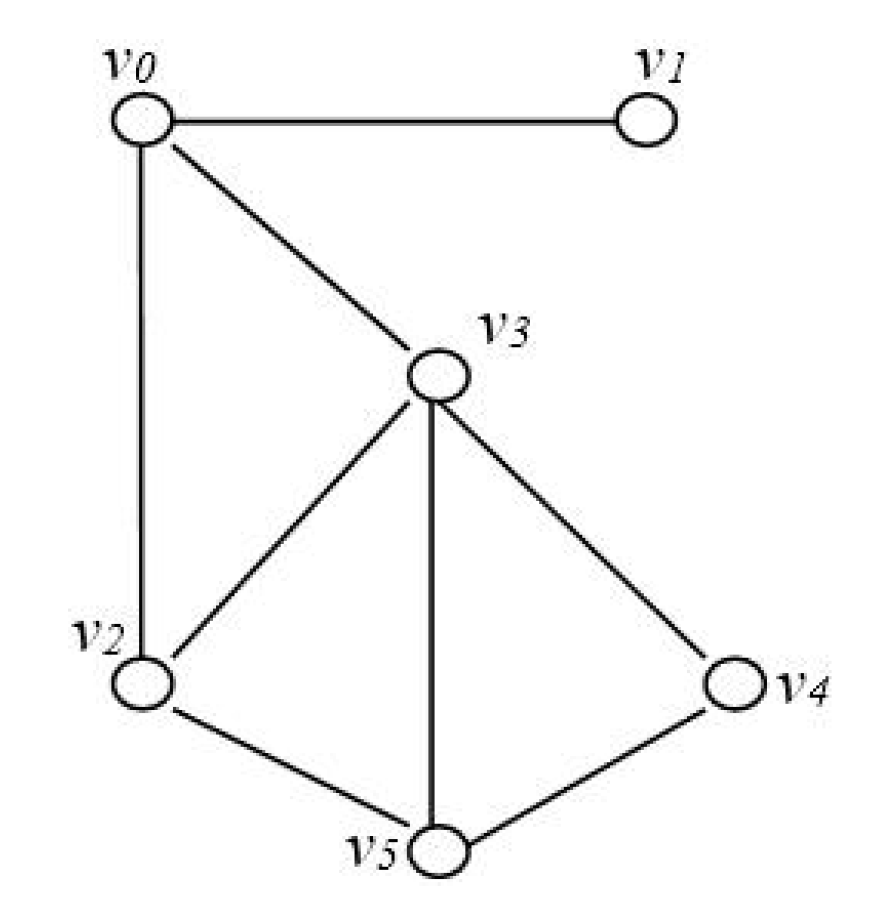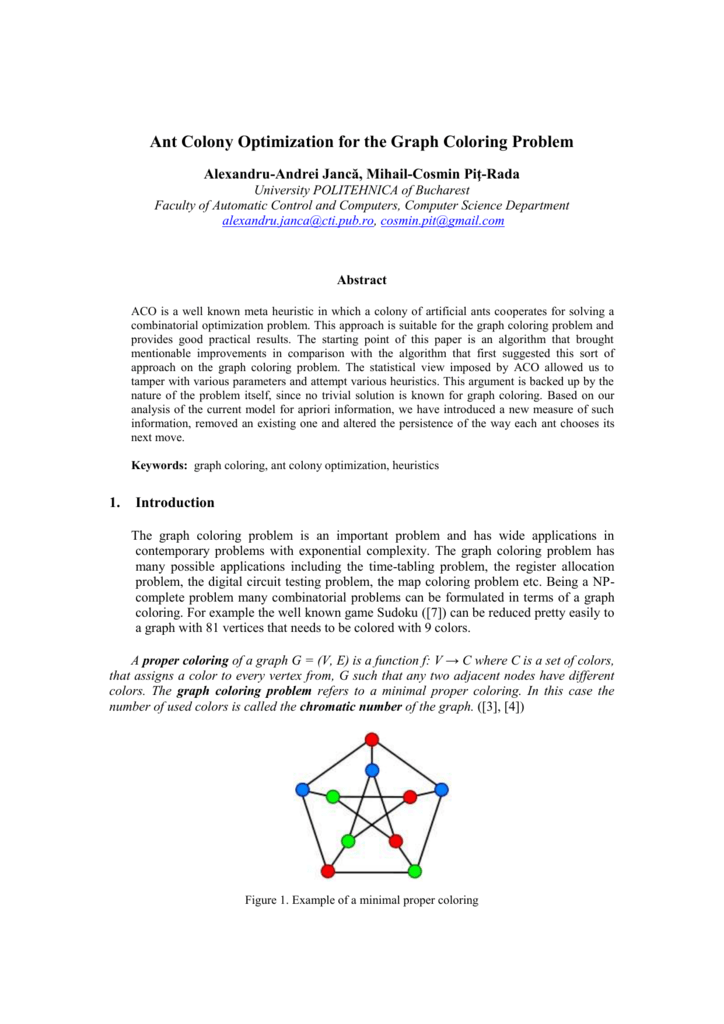M Coloring Optimization Problem
Way that no two adjacent nodes have the same color. Constraint programming is an optimization technique that emerged from the field of artificial intelligence.

Programming Interview Graph Coloring Using Backtracking Youtube
11 Coloring Graphs Navely Question.

M coloring optimization problem. After generating a configuration of colour check if. The M colorability optimization problem deals with the smallest integer m for which the graph G can be colored. Section 4 reuses the basic ideas in coloring a query tree to develop an efcient algorithm that minimizes.
At the end of this video in a MAP region 1 is also Adjacent to region 4 Graph coloring problem using BacktrackingPATREON. This graph coloring problem is also known as M-colorability decision problem. Graph vertex coloring with a given number of colors is a well-known and much-studied NP-complete problem.
The m-colorability optimization asks for the smallest integer m for which graph G can be colored. The other graph coloring problems like Edge Coloring No vertex is incident to two edges of same color and Face Coloring Geographical Map Coloring can be transformed into vertex coloring. The problem is given m colors find a way of coloring the vertices of a graph such that no two adjacent vertices are colored using same color.
Confirm whether it is valid to color the current vertex with the current color by checking whether any of its adjacent vertices are colored with the same color. A multi-coloring graph problem assigns k colors to all the nodes in a graph in which connected nodes ie adjacent nodes should not have the same color each other. The graph coloring problem is one of the NP-hard problems and the k-coloring graph problem is NP-complete for any integer k 3 Garey and others 1982.
This is known as m-colorability decision problem. Coloring search can be solved by calling coloring optimization and finding the value m which is the amount of colors needed so that no two adjacent vertices have the same color. M Coloring Problem Backtracking-5 Given an undirected graph and a number m determine if the graph can be colored with at most m colors such that no two adjacent vertices of.
If yes then color it and otherwise try a different color. Minimize the number of colors used. The problem states that given m colors determine a way of coloring the vertices of a graph such that no two adjacent vertices are assigned same color.
If not then move to the next adjacent uncolored vertex. Once m is found coloring search can color the vertices of the graph by rotating through the m different colors. Since each node can be coloured using any of the m available colours the total number of colour configurations possible are mV.
There is also provided m colors. This integer can be referred to as the chromatic number of the graph. The integer is known as a chromatic number of the graph.
It is characterized by two key ideas. Can an n-vertex graph be colored with k colors. Tree Annofafibn and Coloring optimization problems that are solved in this paper.
5 Total Colors Used. Adjacent vertices do not have the same color and use as few colors as possible 10 The m-Coloring optimization Problem Objective. Try all possible ways of assigning k colors to the n vertices If a valid coloring.
This variant of the graph multi-coloring problem is of interest because it can model practical job scheduling applications. Section 3 develops an efficient algorithm for query tree coloring and shows several ex- tensions. The smallest number of colors needed to color a graph G is called its chromatic number.
Check if all vertices are colored or not. To express the optimization problem at a high level to reveal its structure and to use constraints to reduce the search space by removing from the variable domains values that cannot appear in solutions. Section 3 develops an efcient algorithm for query tree coloring and shows several ex-tensions.
Those hybrid algorithms use a powerful local search inside a population-based algorithm. In this problem an undirected graph is given. Generate all possible configurations of colors.
Vertex coloring is the most commonly encountered graph coloring problem. The most effective methods to solve this problem are proved to be hybrid algorithms such as memetic algorithms or quantum annealing. The problem is to find if it is possible to assign nodes with m different colors such that no two adjacent vertices of the graph are of the same colors.
Section 2 denes the Query Tree Coloring and Query Tree Annotation and Coloring optimization problems that are solved in this paper. This question is equivalent to the graph coloring problem Nave algorithm. Section 4 reuses the basic ideas in coloring a query tree to develop an efficient algorithm that minimizes.

An Example Of Graph Coloring Problem Download Scientific Diagram

Example Of A Graph For The K Coloring Problem Download Scientific Diagram

An Anti Aging Pundit Solves A Decades Old Math Problem Graphing Love Coloring Pages Easy Coloring Pages

Graph Theory M Point Coloring Decision Problem Of Graphs Backtracking Method Iterative Programmer Sought

A Modified Artificial Bee Colony Algorithm To Solve Clustering Problems Bee Colony Artificial Neural Network Solving

Analysis Of Graph Coloring Algorithm

6 3 Graph Coloring Problem Backtracking Youtube

An Exact Approach For The Vertex Coloring Problem Sciencedirect

Graph Coloring Problem Techie Delight

M Coloring Problem Backtracking 5 Geeksforgeeks

Graph Coloring Problem Techie Delight

Mathematics Free Full Text An Efficient Memetic Algorithm For The Minimum Load Coloring Problem Html

An Example Of A Graph Coloring Problem And Its Representation Download Scientific Diagram

Ant Colony Optimization For The Graph Coloring Problem

Graph Coloring Problem Techie Delight

Graph Colouring Problem Backtracking Youtube

Pdf Memetic Algorithm To Solve Graph Coloring Problem

A Solution To The Map Coloring Problem Of The World With Four Download Scientific Diagram
